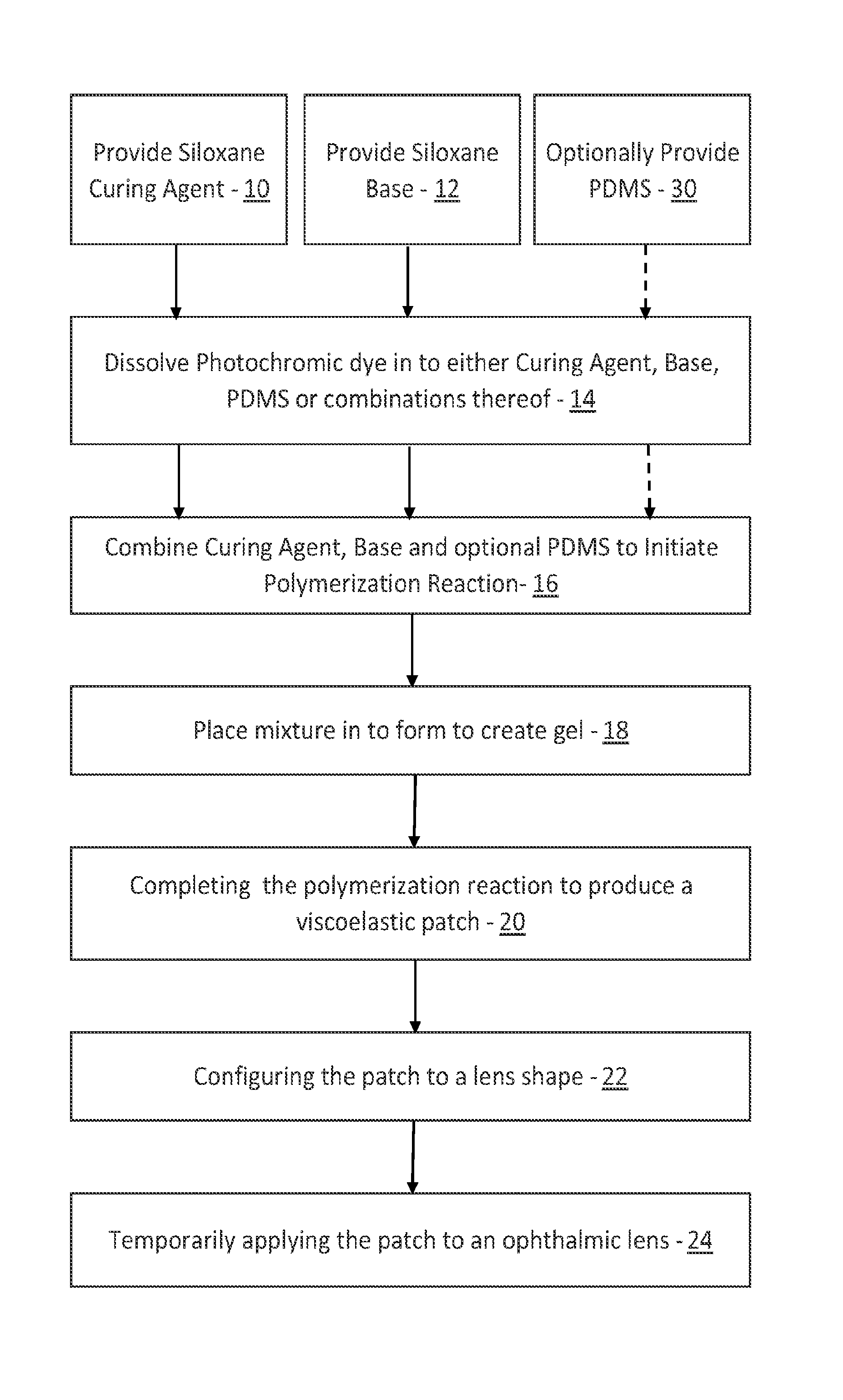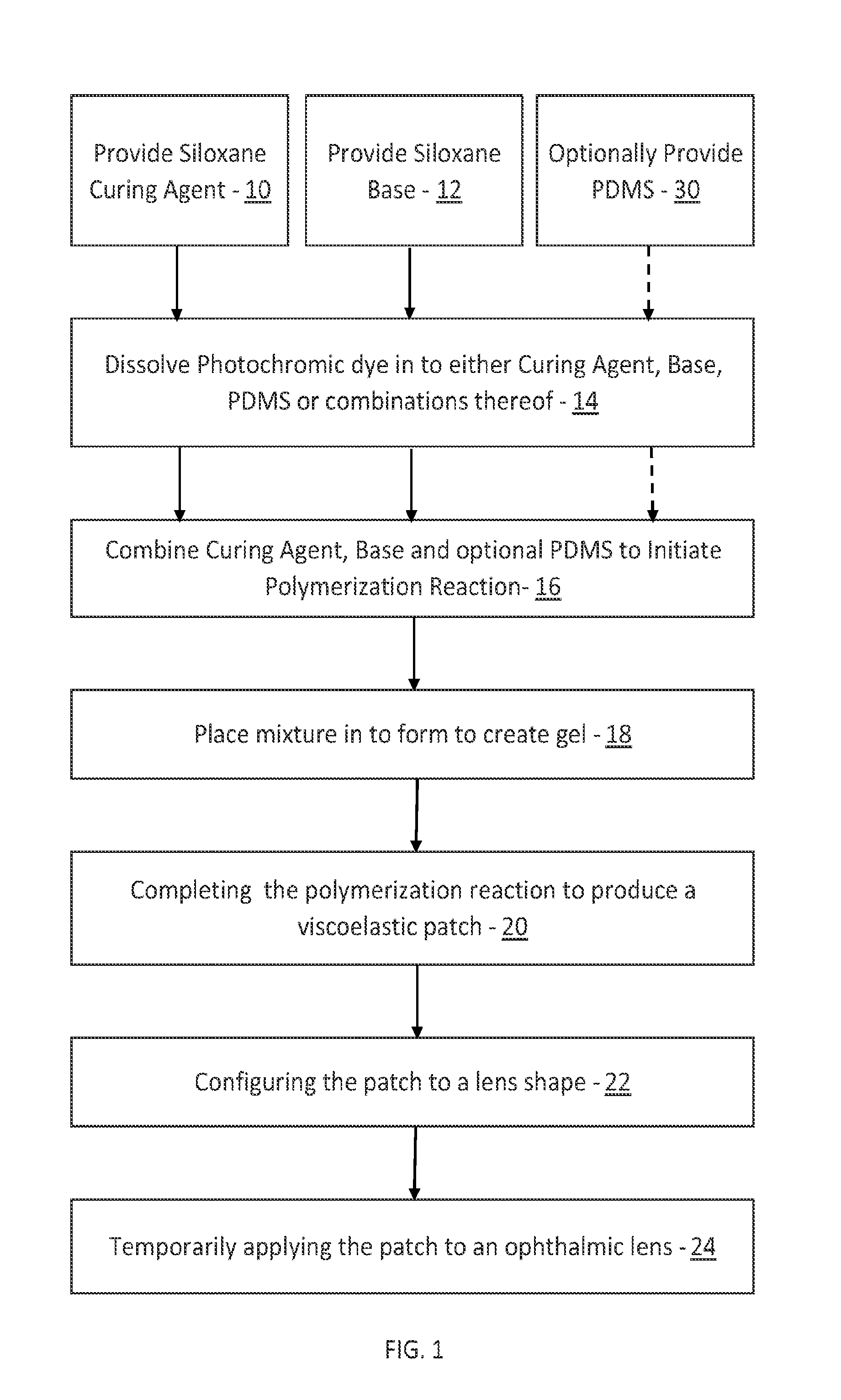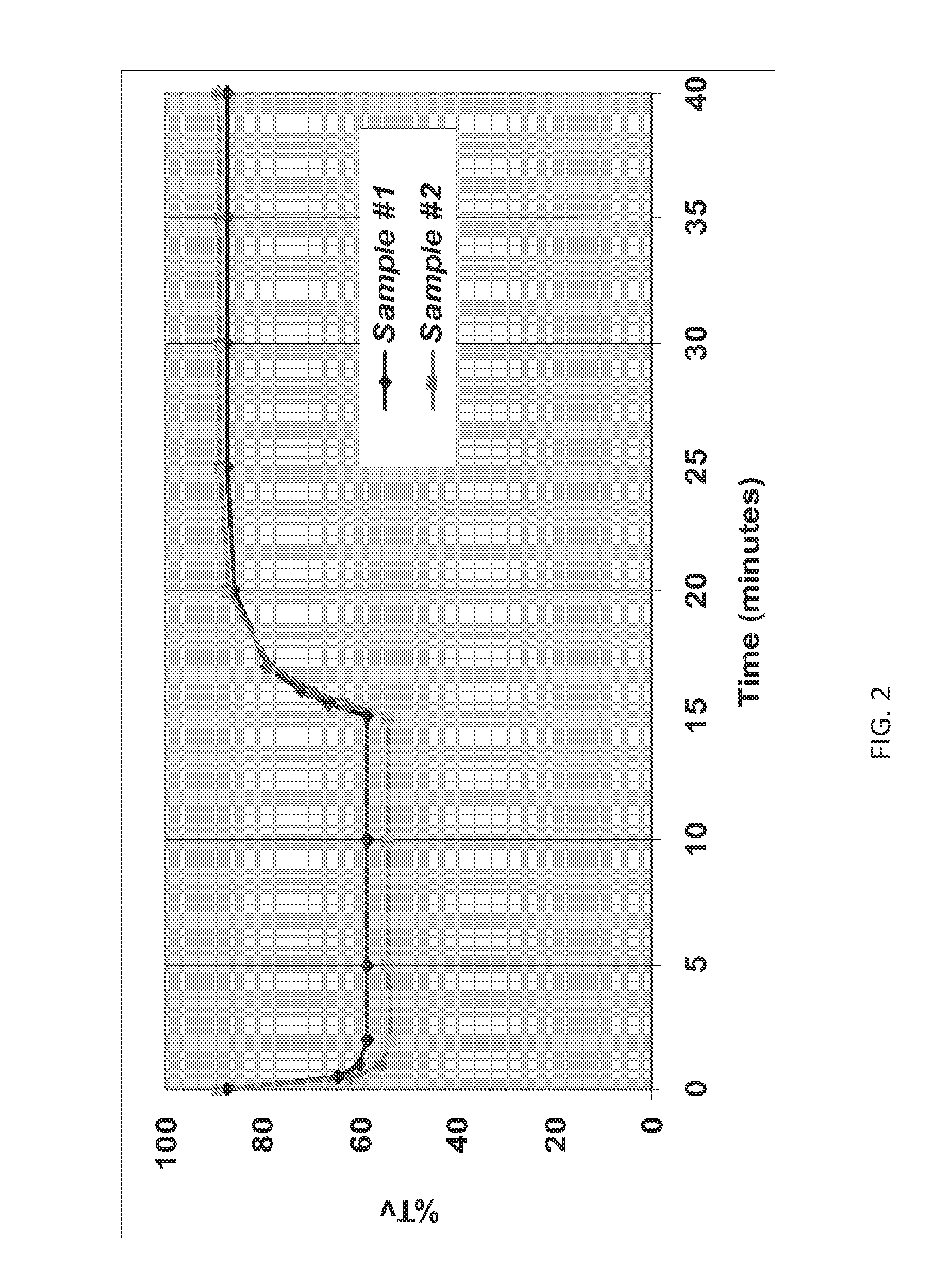Temporary photochromic patch for an ophtalmic lens
- Summary
- Abstract
- Description
- Claims
- Application Information
AI Technical Summary
Benefits of technology
Problems solved by technology
Method used
Image
Examples
example i
Mold Max 27T Silicone Kit
[0034]Photochromic PDMS patches were prepared using Mold Max 27T silicone kit (available from Smooth-On) according to the following procedure:
[0035]1. Mold Max 27T part-A measuring at 26.3 grams was poured into a glass beaker.
[0036]Next, 0.0281 grams of a mixture of photochromic dye from Transitions Optical, Inc. (TOI) to provide a brown color in the activated state, was added into the beaker in step 1. The amount of the dye was about 0.1 wt % of the part-A of Mold Max 27T. The mixture was then heated on a hot plate to 175° C. to help dissolving the photochromic dye.
[0037]3. The mixture in step 2 was let cooled to room temperature (about 25° C.) then 0.26 grams of the part-B of Mold Max 27T were added into the beaker and mixed thoroughly.
[0038]4. The resulting mixture of step 3 was poured into a flat-bottom plastic cup. A thin patch of uncured gel-like silicone was formed.
[0039]5. The plastic cup was placed in an oven under 30 in-Hg vacuums at 75° C. for abo...
example ii
Dow Corning Sylgard® 184 Silicone Elastomer Kit
[0041]Photochromic PDMS patches were prepared using Dow Corning Sylgard® 184 silicone elastomer kit according to the following procedure:
[0042]1. First 0.3312 grams of #170-24-4 B photochromic dye from TOT were dissolved into 3.08 grams of the curing agent of the Sylgard 184 that were heated at 130° C. The resulting mixture was then filtered through a 5 μm filter and let cooled to room temperature.
[0043]2. The filtered solution in step 1 was mixed into 30.1 grams of the Sylgard 184 base so that the photochromic dye was about 1 wt % of the base.
[0044]3. The resulting mixture of step 2 was poured into a flat-bottom glass dish forming a thin patch (about 1 mm thick) of uncured gel-like silicone.
[0045]4. The glass dish was placed in an oven under 30 in-Hg vacuums at 75° C. for about 1 hour to cure the silicone.
[0046]The resulting PDMS patch turned dark when exposed to sunlight and returned to clear when blocked the sunlight exposure, which ...
example iii
Dow Corning Sylgard® 184 Silicone Elastomer Kit+200® Fluid
[0047]Photochromic PDMS patches were prepared using Dow Corning Sylgard® 184 silicone elastomer kit and Dow Corning 200® Fluid 20 CST according to the following procedure:
[0048]1. First 0.16 grains of #170-24-4 B photochromic dye from TOI were dissolved into 3.0 grams of the Dow Corning 200® Fluid 20 CST that were heated at 130° C. The resulting mixture was then filtered, through a 5 μm filter and let cooled to room temperature.
[0049]2. The filtered solution in step 1 was mixed into 30.0 grams of the Sylgard 184 base at room temperature.
[0050]3. Next, 0.162 grams of #170-24-4 B photochromic dye from TOI were dissolved into 1.50 grams of the curing agent of the Sylgard 184 that were heated at 130° C. The resulting mixture was then filtered through a 5 μm filter and let cooled to room temperature.
[0051]4. The mixtures of step 2 and step 3 were then mixed together thoroughly at room temperature.
[0052]5. The resulting mixture of ...
PUM
| Property | Measurement | Unit |
|---|---|---|
| Temperature | aaaaa | aaaaa |
| Time | aaaaa | aaaaa |
| Temperature | aaaaa | aaaaa |
Abstract
Description
Claims
Application Information
 Login to View More
Login to View More - R&D
- Intellectual Property
- Life Sciences
- Materials
- Tech Scout
- Unparalleled Data Quality
- Higher Quality Content
- 60% Fewer Hallucinations
Browse by: Latest US Patents, China's latest patents, Technical Efficacy Thesaurus, Application Domain, Technology Topic, Popular Technical Reports.
© 2025 PatSnap. All rights reserved.Legal|Privacy policy|Modern Slavery Act Transparency Statement|Sitemap|About US| Contact US: help@patsnap.com



